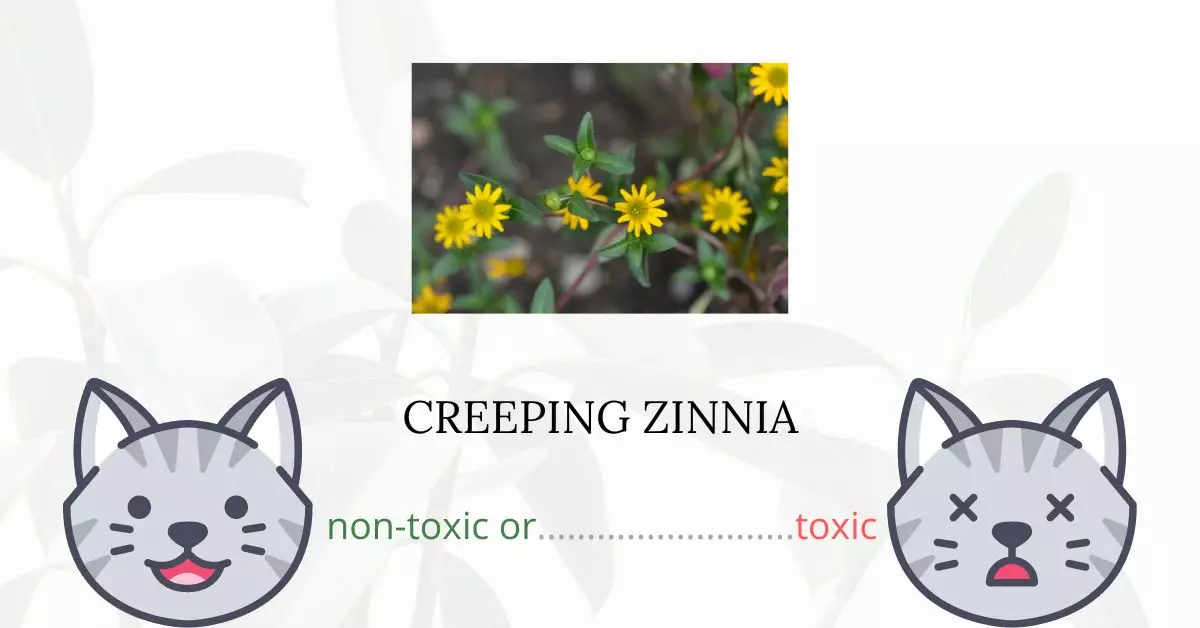Creeping Zinnias, scientifically known as Sanvitalia species, are not toxic to cats. If you have feline companions at home, you can rest assured that these plants are safe even if your cat comes into contact with them. While the mere touch, roll, or lick of a creeping zinnia poses no threat, ingestion may warrant further discussion.
To ensure the accuracy and relevance of our information, this article was written in collaboration with a team of experienced DVMs (doctors of veterinary medicine). Their invaluable insights, combined with extensive research from high-authority websites such as ASPCA and PetMD, allow us to provide a comprehensive understanding of the potential risks Creeping Zinnias may present to cats. Read on to learn more about the effects of this plant on felines, especially when ingested.
Can Cats Eat Creeping Zinnia?

Eating creeping zinnia will not cause severe side effects to your felines. However, you should still take precautions and not let your cat consume a lot of this plant (or any kind of plant).
Plant materials cannot be entirely processed by cats’ bodies. As a result, if they consume an excessive amount of plant matter, they may have indigestion and other gastrointestinal issues.
Another thing to keep in mind is that chemicals used on plants might be harmful to cats. If you have plants at home, be cautious about the fertilizer and pesticides you apply to them. Chemical residues on plants may be hazardous to cats if consumed.
What is Creeping Zinnia?

Creeping zinnia is a bright Mexican annual with blooms that look like little zinnias. It’s ideal for growing in hanging baskets and pots because its silky hair stems quickly spread and prostrate, providing a dense carpet of colorful leaves dotted with blooms throughout the summer. It’s also perfect for edging sunny beds and pathways.
Scientifically known as Sanvitalia species, this Asteraceae plant has an erect stem that can range from 2 to 29 centimeters. The leaves of creeping zinnias are linear to lance-shaped and a few millimeters long.
A cyme of flower heads with thick, leathery yellow ray florets notched at the tips characterizes creeping zinnia. This plant also bears a fruit called an achene.
Creeping zinnia plants produce thick carpets of tiny yellow blooms and cascade over the side of the container. This makes them ideal for light and balcony plants. The plant may grow around 20 to 35 centimeters and blooms every year from June through October.
Keeping Cats Away From Creeping Zinnia

The most ideal way to prevent your cats from getting near your plants is to train them to do so. This may be done by directly telling them “no” or scolding them when they touch your plants. You can also spray water on them every time they attempt to get a hold of your house plants.
Some experts also suggest placing aluminum foil on the ground near your plants. Since cats detest the crinkly odor and sound of aluminum foil, they will most likely avoid the surface.
Plants to Avoid For Your Cats
If you are a cat owner and unsure if the plants growing in your yard are harmful to your cats, check out this list of toxic plants for cats. You can also check our list of non-toxic plants for cats.





